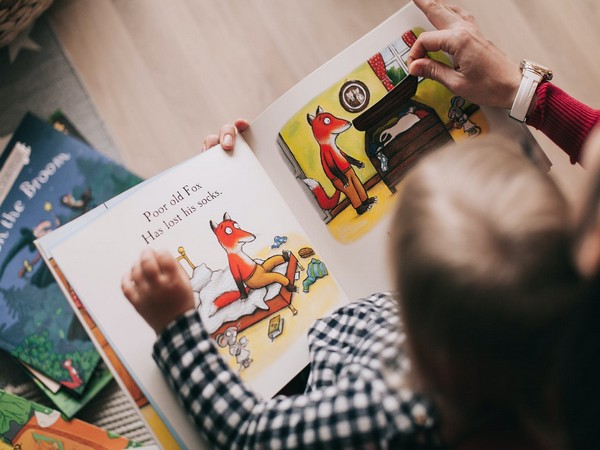School closures lead to inequities and learning loss in South Asia: UNICEF
School closures in South Asia due to the COVID-19 pandemic have interrupted the learning of 434 million children.

School closures have led to alarming inequities in learning opportunities for children in South Asia, despite significant efforts by governments and partners to expand remote learning, according to UNICEF research conducted in India, the Maldives, Pakistan and Sri Lanka.
School closures in South Asia due to the COVID-19 pandemic have interrupted the learning of 434 million children. According to UNICEF’s research, a substantial proportion of students and their parents reported that students learnt significantly less compared to pre-pandemic levels. In India, 80 per cent of children aged 14-18 years reported lower levels of learning than when physically at school. Similarly, in Sri Lanka, 69 per cent of parents of primary school children reported that their children were learning “less” or “a lot less.” Girls, children from the most disadvantaged households and children with disabilities faced the biggest challenges while learning remotely.
“School closures in South Asia have forced hundreds of millions of children and their teachers to transition to remote learning in a region with low connectivity and device affordability,” said George Laryea-Adjei, UNICEF Regional Director for South Asia. “Even when a family has access to technology, children are not always able to access it. As a result, children have suffered enormous setbacks in their learning journey.”
Despite significant efforts from governments, low connectivity and access to digital devices have severely hampered efforts to roll out remote learning. In India, 42 per cent of children between 6-13 years reported not using any type of remote learning during school closures. In Pakistan 23 per cent of younger children didn’t have access to any device that could support remote learning. Poor and disadvantaged households have been the worst hit, with many families struggling to afford even a single device.
Even when devices are available, UNICEF’s research indicates that they are often underutilized and that children’s access to them is often limited. For example, in Pakistan, among children with access to devices, only about 24 per cent could use them when they wanted to.
The research found that student-teacher engagement, when regular and reciprocal, is a strong predictor of success in children’s learning, especially for younger students. However, the surveys found that most students had little or no contact with their teachers after schools closed. In Sri Lankan private primary schools, 52 per cent of teachers reported contacting their students five days a week, but this number dropped to only 8 per cent for teachers from public primary schools.
“The safe reopening of schools must be considered an utmost priority for all governments. Parallelly, investing in teachers will ensure that teachers and schools can adapt to all situations. The more teachers are trained, equipped and supported on distance and blended learning, the better they will be able to reach all their students,” added George Laryea-Adjei. “This is a critical investment we need to make for children as the region gears up for future waves of COVID-19. We need to build systems which can weather any storm and keep children learning, no matter the circumstances.”
To ensure that children keep learning, UNICEF is calling on:
Governments to prioritize the safe reopening of all schools, while also ensuring that children are able to pursue quality learning remotely if necessary
Teachers to assess children’s learning levels and ensure catch up is enabled through a "learning recovery" period
Governments to prioritize the vaccination of teachers to support the safe reopening of schools
Governments to train and equip teachers to better reach children and adolescents with limited or no access to technology through a combination of modalities including mobile devices, TV, radio, and printed materials
Governments and donors to protect and expand investments in education, including critical pre-primary and foundational literacy and numeracy
Private sector and civil society organizations to work with governments in improving connectivity and creating high-quality, multilingual remote learning content tailored to students’ needs
School administrators and education officials to provide more guidance to teachers to engage with their students and use different types of learning techniques
Parents and caregivers to receive adequate support and guidance to continue home-based learning
School closures in South Asia have compounded a situation that was already precarious. Even before the pandemic, almost 60 per cent of children in South Asia were unable to read and understand a simple text by the time they are 10 years old. In addition, 12.5 million children at the primary level and 16.5 million children at the lower secondary level were out of school.
- READ MORE ON:
- UNICEF
- South Asia
- children
- COVID-19
- School
- George Laryea-Adjei
ALSO READ
Indian-American entrepreneur revolutionises South Asian fashion for diaspora
South Asia's jobs creation lags population growth, says World Bank
Arthshila Launches Exclusive Book Series on Modern South Asia Architecture
UNICEF data reveals increase in civilian casualties from landmine and explosive ordnance in Myanmar’s conflict
Mr. Kapil Bhatia felicitated with the prestigious Lifetime Achievement Award at the Hotel Investment Conference-South Asia (HICSA) 2024










